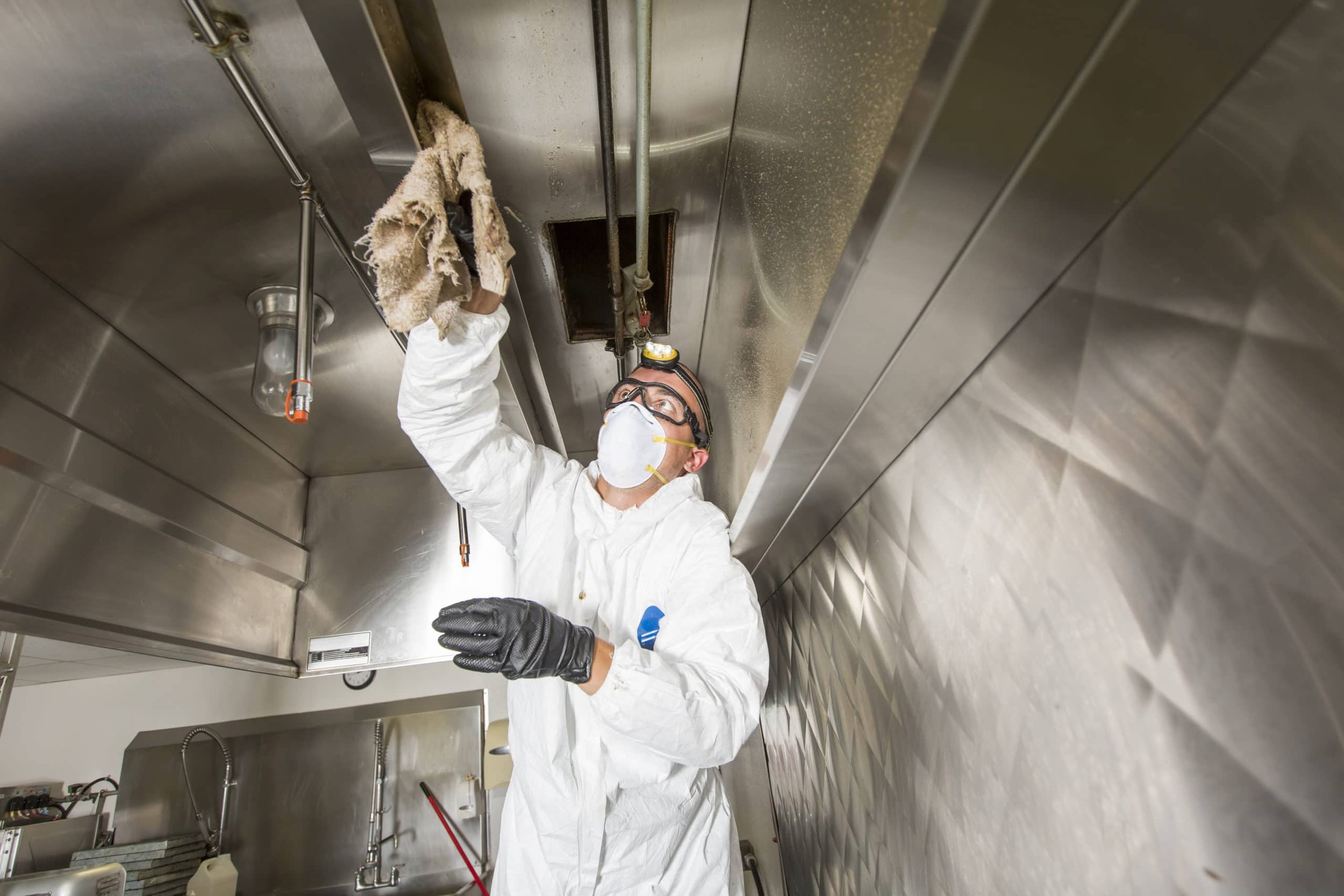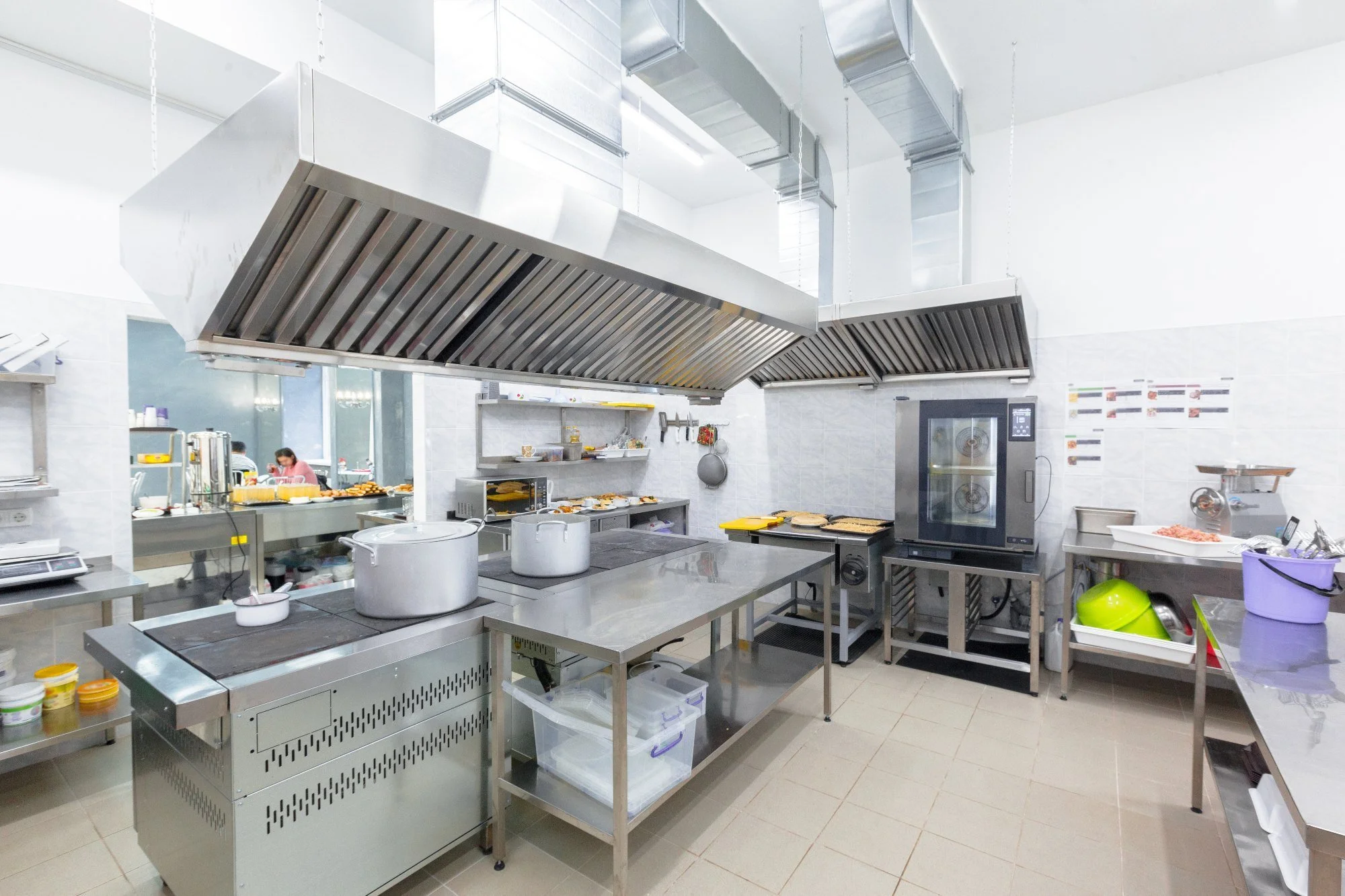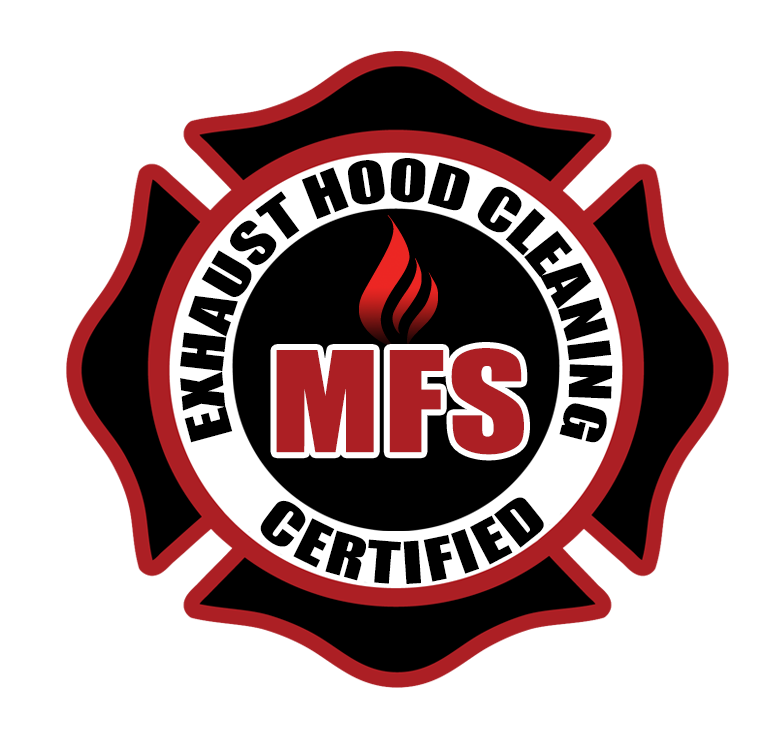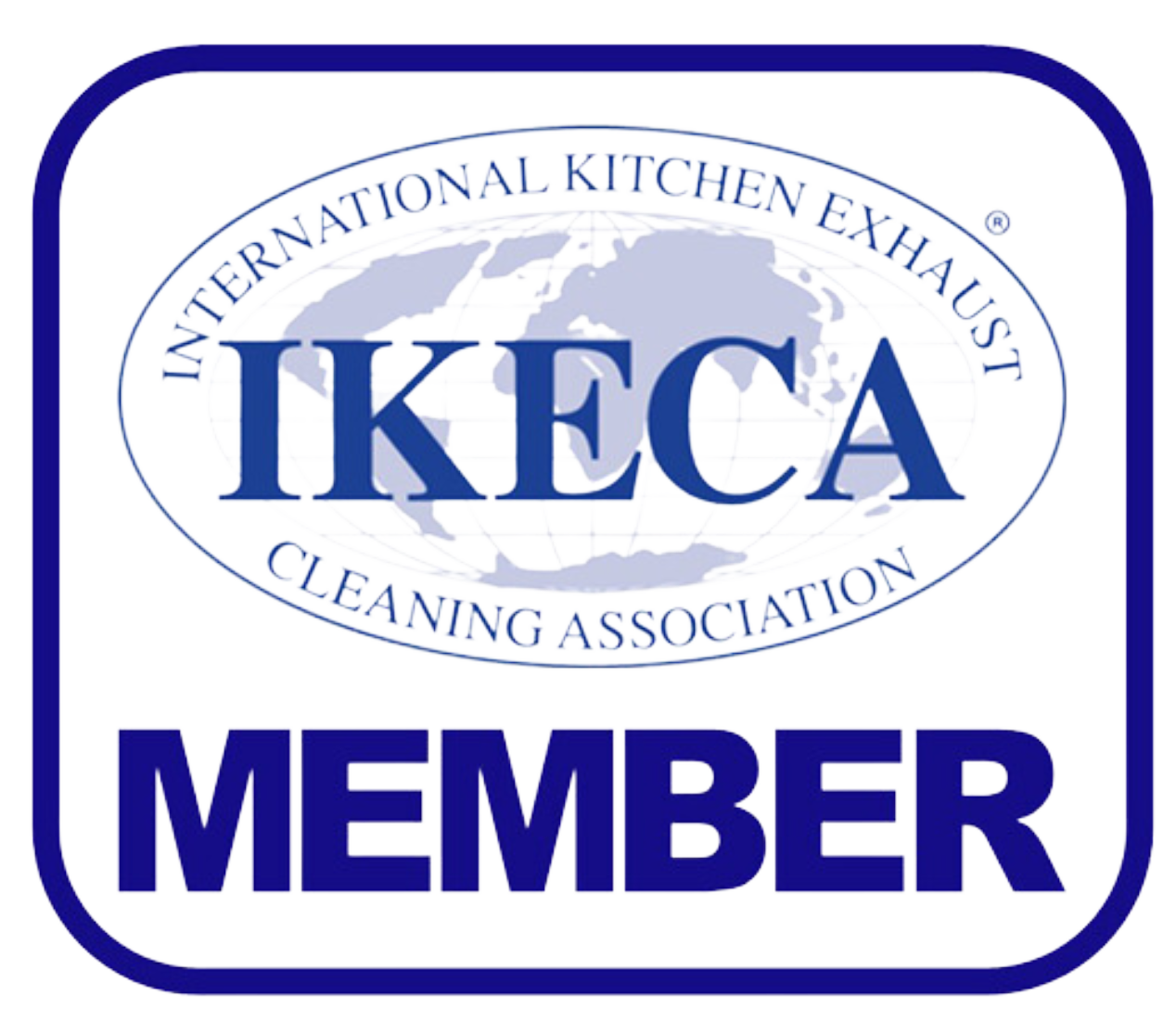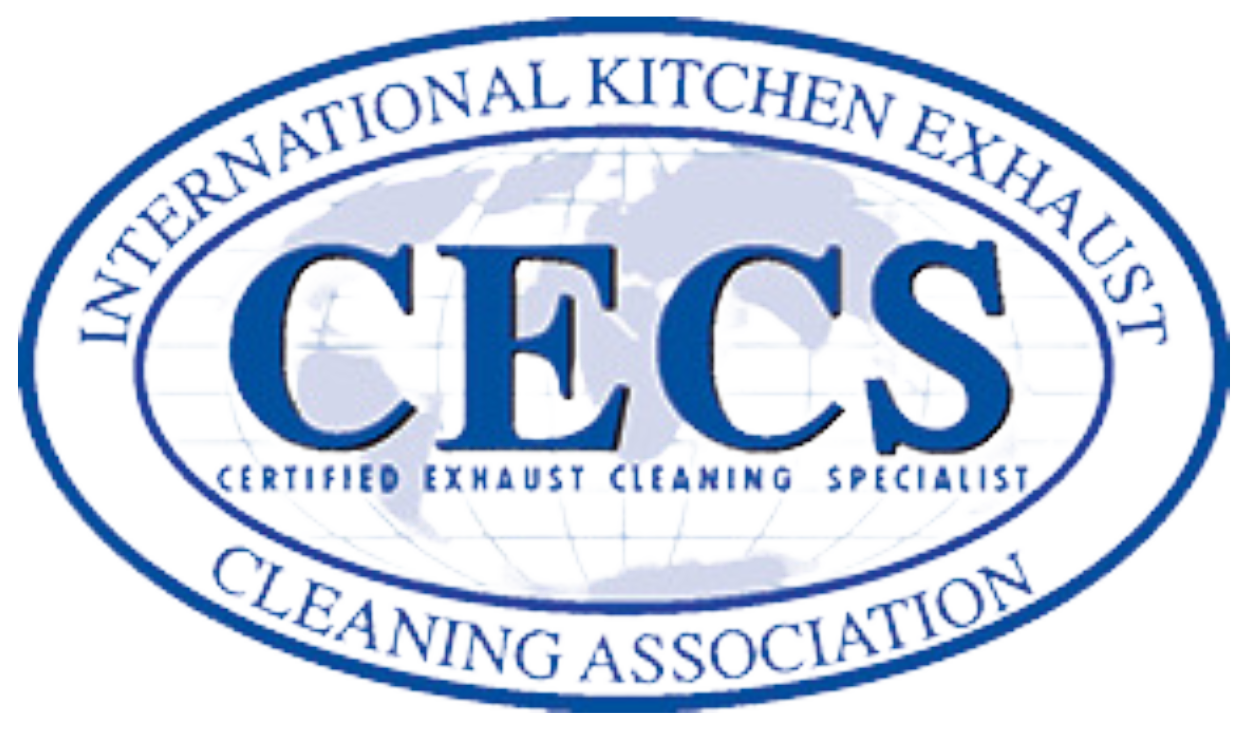Exhaust Hood System Cleaning Importance & Frequency
Overall Importance of Kitchen Exhaust Hood System Cleaning:
The purpose of cleaning kitchen exhaust ventilation systems is to prevent the buildup of flammable materials, which can pose a significant fire hazard. Additionally, regular cleaning helps maintain proper airflow, reduces odors, and ensures that the kitchen remains compliant with health and safety regulations. The top 3 reasons to clean are…
Fire Prevention: Regular cleaning prevents grease fires, which can start in the hood or ducts if too much grease accumulates.
Air Quality: Clean exhaust systems improve air quality in the kitchen by efficiently removing smoke, heat, and odors. (Better circulation also means cooler kitchen!)
Compliance: It ensures compliance with local fire and health regulations, avoiding fines and potential closure.
Required Frequency of Kitchen Exhaust Hood System Cleaning:
The frequency of inspection and cleaning depends on the volume of cooking and the type of food prepared.
High-volume kitchens, like those in restaurants or hotels, require monthly inspection and cleaning, while lower-volume kitchens, like mom and pop shops or summer camps, need inspection and cleaning quarterly or semi-annually.
Commercial Kitchen Exhaust System Cleaning & Inspection
National, State, & Local Regulations
National Fire Protection Association (NFPA) 96:
NFPA 96 is the primary standard governing the installation, inspection, and maintenance of commercial kitchen ventilation systems. This standard serves as the foundational guideline for ensuring that commercial kitchen ventilation systems are designed, installed, and maintained in a way that minimizes the risk of fire, protects property, and ensures the safety of both staff and customers. Each system must comply with NFPA standards and undergo regular inspection and maintenance.
NFPA 96 requires regular inspection and potential cleaning of the kitchen exhaust system, with the frequency depending on the type and volume of cooking. For example:
High-volume operations require MONTHLY inspection and cleaning.
Moderate-volume operations require QUARTERLY inspection and cleaning.
Low-volume operations, like churches, need SEMI-ANNUAL inspection and cleaning.
The standard mandates that inspection and cleaning must be performed by trained, qualified personnel.
Occupational Safety and Health Administration (OSHA):
OSHA sets guidelines for ensuring a safe working environment, which includes the cleanliness of kitchen exhaust systems. Employers, including companies like Deftwerk Solutions, must ensure that cleaning personnel follow OSHA safety protocols, such as using personal protective equipment (PPE) and proper cleaning chemicals.
State and Local Fire Codes:
State and local jurisdictions may have additional fire codes that supplement or expand upon NFPA 96 requirements. Local jurisdictions within Washington may have additional requirements or stricter regulations.
These codes can dictate specific cleaning frequencies, inspection requirements, and reporting protocols.
2021 Washington State Fire Code (which is based on the International Fire Code) has specific requirements for commercial cooking operations, including the installation of automatic fire sprinkler systems in certain circumstances, like protecting exhaust hood and duct systems when necessary.
Health Department Regulations:
Health departments at the state or local level often require that commercial kitchens maintain clean and sanitary conditions, including the exhaust system in its entirety.
Inspections may be conducted to ensure compliance, and failure to comply can result in hefty fines or closure.
Environmental Protection Agency (EPA):
The EPA regulates the disposal of grease and other waste products generated during the cleaning process.
Grease and chemicals must be disposed of in accordance with environmental regulations to prevent contamination of water sources. Our proprietary, biodegradable degreasers exceed designated requirements.
Scheduled compliance with these regulations not only minimizes fire risks, but also ensures the kitchen operates efficiently and remains in good standing with health and safety authorities!
Pre-Inspection & Cleaning Preparation
Commercial kitchen exhaust hood system cleaning is a critical maintenance task that involves removing grease, grime, and other contaminants from the kitchen's exhaust ventilation. A commercial kitchen exhaust system typically includes the exhaust hood, filters, ducts, and exhaust upblast fans, which all need to be inspected and cleaned on a regular basis.
Initial System Inspection:
A thorough inspection of the kitchen exhaust system is conducted by one of our MFS NFPA 96 accredited Private Inspectors to assess the level of grease buildup and identify any areas needing special attention relative to the hood plenum, filters, ducts, and exhaust upblast fans.
Full system service and function reports are generated along with photographic evidence of inspection findings.
General Preparation:
Before cleaning, the kitchen and surrounding areas are prepared to prevent contamination. This typically involves covering nearby appliances and surfaces with welding blankets and/or plastic protective sheeting.
We cover kitchen equipment and surfaces to protect them from debris and cleaning chemicals.
Commercial Kitchen Exhaust Hood System Cleaning Procedures
Cleaning the Hood Interior & Exterior:
The exhaust hood (plenum), which captures grease and smoke, is cleaned first. Degreasers and hot water are used to break down and remove grease buildup.
We use a degreasing agent to clean the interior and exterior surfaces of the hood.
Scrape off any heavy grease deposits.
Rinse the surfaces with hot water.
Cleaning the Filters:
Special attention is paid to the filters, as they trap most of the grease.
Remove the filters from the hood.
Soak them in a degreasing solution for an extended period of time.
Scrub and rinse the filters thoroughly before reinstalling them.
Cleaning the Ducts & Fans:
The ductwork, which channels air from the hood to the outside, is cleaned using high-pressure washing or scrubbing. This is crucial because grease buildup in the ducts can become a significant fire hazard. The exhaust upblast fan and vents are also cleaned to ensure proper airflow and to remove any grease that might have accumulated on the blades and other components.
Access the ductwork and exhaust fan to remove grease buildup.
Use specialized tools, such as rotary brushes or steam cleaners, to clean the ducts and fans.
Inspect the system for any damage or excessive wear.
Post-Inspection & Certification
Final Inspection and Certification Documentation:
After cleaning, a post (final) inspection is conducted to ensure that all grease and contaminants have been removed. The system should look clean and free of any buildup. A Job Service Report (JSR) is generated and Certificate(s) of Performance are issued (applied to exhaust hood) for each system. The JSR and Certificate of Performance indicate that your kitchen exhaust system meets current safety standards—insurance companies and fire marshals alike will want the documentation for review to ensure NFPA 96 Code compliance!
Once done, we conduct a final inspection to ensure all areas have been thoroughly cleaned.
Document the cleaning process, including before and after photos, for records and compliance.
Complete Job Service Report and issue Certificate(s) of Performance.
Reassembly After Cleaning:
We reinstall all components and restore the power to the exhaust system if and when powered off.
Perform a final test to ensure the system is operating correctly, wrap up, and ship out!
Certification Document Storage & Client Portal:
Invoices are issued and due the day the job is completed (automatic payment processing available).
Job Service Reports and corresponding photos are stored in our Client Portal for up to 5 years.
24/7 access to Certification Documentation, service appointment schedule, and payments.
Contact us for a FREE digital inspection & estimate!
Accreditations & Affiliations


